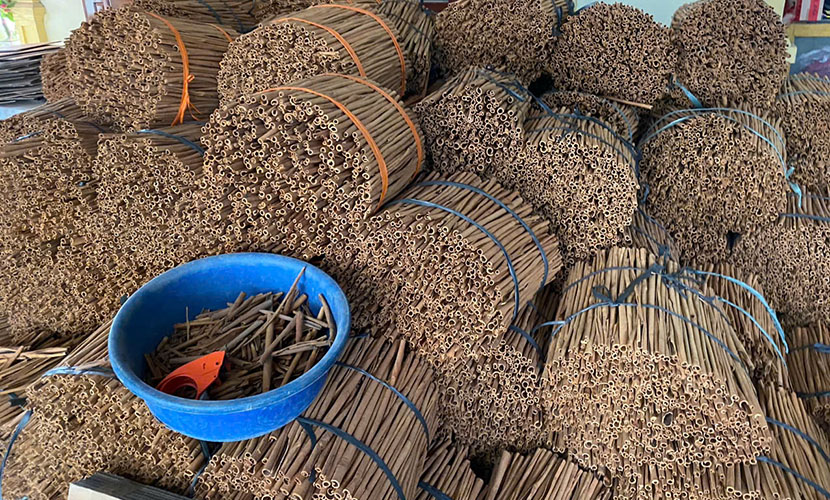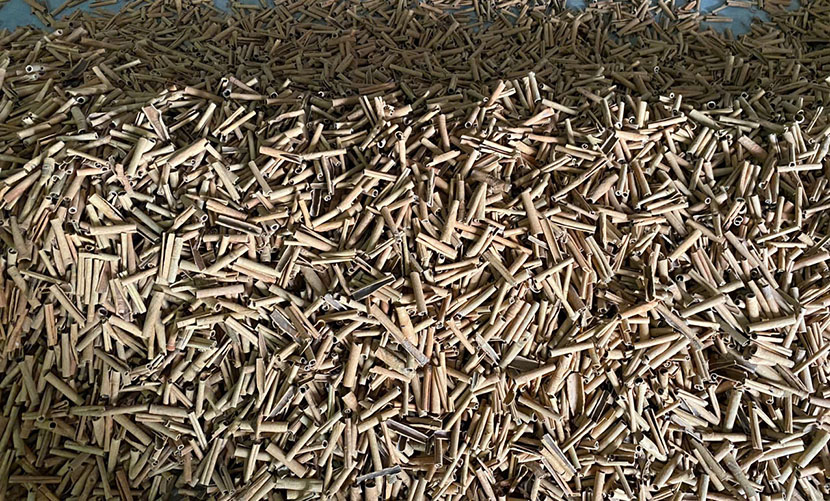
Vietnam’s cinnamon industry is undergoing a strong transformation. It is not only affirming its solid position on the international stage but also opening up strategic and promising directions. However, the cinnamon industry is facing numerous challenges ahead.
From a business perspective, Vietnam’s cinnamon industry has witnessed remarkable growth in recent years. In 2024, Vietnam’s cinnamon export turnover reached $274.5 million, with an export volume of 99,874 tons. These figures marked an increase of 11.7% in volume and 5.2% in value compared to 2023.

Vietnam’s cinnamon
This growth momentum has impressively continued in the early months of 2025. In the first five monthes, the Vietnam’s cinnamon export revenue reached $123 million, from 47,710 tons of exports. Compared with the same period last year, Vietnamese cinnamon exports represented a 42.3% increase in volume and a 27.8% rise in value.
This boom is reinforced by the fact that Vietnam currently holds the position of the world’s third-largest cinnamon producer, following only Indonesia and China. The cinnamon cultivation area has also expanded significantly, from 13,863 hectares in 2000 to 186,000 hectares in 2023. Yen Bai and Lao Cai provinces have emerged as the largest cinnamon hubs, accounting for 47.8% and 33.3% of the total cultivation area, respectively.

Vietnam’s cinnamon long sticks
Vietnam’s cinnamon export market is currently considered highly diverse. There are main markets such as India, China, Bangladesh, the United States, the European Union, and the Middle East. Among these, India remains Vietnam’s largest export market, accounting for 35.9% of total export volume in 2024 with 35,885 ton. The United States is the second-largest market, recording a 9% increase in export volume. Bangladesh ranks third with a strong growth rate of 42.5% in 2024.
Notably, the demand for Vietnamese cinnamon in functional foods, cosmetics, and pharmaceuticals is rapidly increasing in developed countries. It opens a significant opportunity for Vietnamese spice businesses to enhance product value. Furthermore, commitments under free trade agreements help to reduce tariffs, creating favorable conditions for Vietnamese cinnamon to expand its market share in high-end markets.
However, to sustain its growth momentum and truly elevate its global standing, Vietnam’s cinnamon industry faces significant strategic challenges. Heavy reliance on raw exports remains a major obstacle, limiting added value. Especially other competititors like Indonesia, Sri Lanka, who are advancing deep processing capabilities and making substantial investments in supply chain development.

Vietnam’s cinnamon short sticks
In addition, import markets are increasingly imposing stricter requirements on traceability, organic certification, technical standards, and food safety and hygiene. This compels Vietnamese enterprises to invest more heavily in raw material areas, processing technology, and quality control systems.
In response to these challenges, many cinnamon exporting companies in Vietnam have begun shifting towards sustainable development. They are actively partnering with farmers to establish organic raw material zones, while implementing international production standards. This will be an essential pathway to enhance competitiveness and increase export value in the medium to long term.
Vietnamese source: https://haiquanonline.com.vn/que-viet-nam-tro-thanh-vang-nau-trieu-do-toan-cau-197272.html
